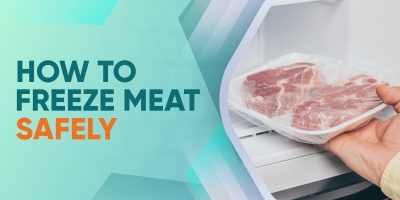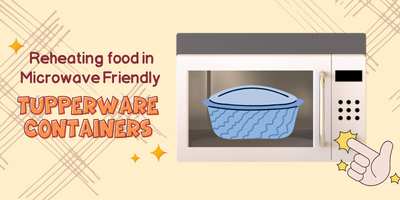
It is wise to think ahead of time and have some extra meal frozen for the coming weekend. Unfortunately, only rarely does food from the freezer come out fresh and delicious. Due to freezing meals inappropriately; frozen meals upon thawing lose their texture and taste. What worse, most of the time food that has been frozen and later thawed often carry food borne bacteria which could lead to sever food poisoning. It is important to freeze extra batches of food right after being cooked to help retaining the freshness longer. Using right food containers such as Tupperware microwave storage box is essential to keep the food juicy & as fresh as it was when cooked.
The Food Storage Cycle: Freezer – Microwave—Dinner Table
Although the food cycle for frozen food is always similar, the food that is served on dining table does not necessarily seem to be same. Of course food that has been frozen the right way can’t be equal to food that is not. Women use various ways to freeze the meals from using ziptop bags to wrapping food in aluminum foil and plastic boxes. Each has its pros and cons but what makes serving frozen food while it still tastes good, close to impossible is the “thawing duration”. Thawing food is a process where there is an increased chance of bacterial growth which may lead to gastro intestinal infections.
Step by Step Guide on Freezing Food

There are various food containers available in the market that you may use to freeze the food. The best is however using all-rounder food containers such as Tupperware microwave rectangular lunch box. It can be safely tossed and transferred from freezer to microwave. The box is heat-resistant, moisture-proof & airtight that makes it all-in-one food container. Engineered to facilitate quick thawing & even heating, Tupperware microwave Rock n Serve moves food easily from freezer to dining table. Here is how to freeze the food to retain maximum freshness.
- Separate the extra batch of meal for freezing that you think you won’t be able to consume it right away. Before you serve the food on table, freeze the batch you have just separated.
- The total time food should remain at room temperature must not be more than 2 hours. It is okay to transfer the leftover food in fridge or freezer while it is still slightly warm. Cover it loosely to let the heat escape or open the vent in your Tupperware microwave Rock N Serve.
- DONOT ever freeze food that is HOT. Freezing hot food will thaw the nearby food items in your freezer leading to bacterial growth.
- As a general rule all perishable food items must be consumed within 4 days of refrigeration or else otherwise should be frozen.
- When freezing soups, stocks or broths; let it first cool in refrigerator. Remove the fat that solidifies at the surface before freezing it as it reduces the taste and texture of the frozen food.
Thawing Food – Slow Thawing in Refrigerator using Tupperware Microwave Containers
When it comes to thawing food, we recommend to adopt “Slow-thawing-approach”. Do not leave food at counter for long to thaw as it may introduce bacteria since temperature of food may rise unevenly. The heat-resistant toxins often remain undestroyed even when cooked.
- Thaw overnight in refrigerator for safe thawing.
- Always freeze food in small portions so that it is easier to thaw. Small 2-5 pounds will safely thaw in refrigerator overnight or in 24 hours maximum.
- Frozen food leaks during thawing. Keep the food bag in a pan or use Tupperware microwave containers to prevent the mess and spills expected.
Quick Defrost using Microwave- Why should you Buy Tupperware Microwave
There are times when you have sudden unexpected guests at home. Since quick defrost is the only option left, we suggest reheating food thoroughly in single session. Unlike food thawed in refrigerator, microwave thawed food reach temperature that encourages bacterial growth. Therefore, finish reheating it right away. It could be a tedious process to convert food from freezer safe food container or ziptop bag to microwave safe container. At such times, Tupperware microwave Rock n Serve comes handy and time saving. You only need to take the container out of the freezer and rotate it in the microwave for enough time. Open the vent so that steam escapes. It prevents mushy texture in your food.

Do not cook/microwave food in the freezer bags unless mentioned otherwise. Freezer bags can reach melting temperatures when exposed to high microwave heat which is hazardously poisonous for human consumption. Tupperware microwave food containers save you time and money that you will spend otherwise buying separate containers for fridge and freezer. Keep your food as aromatic and delicious as it was when cooked with Tupperware microwave containers!



